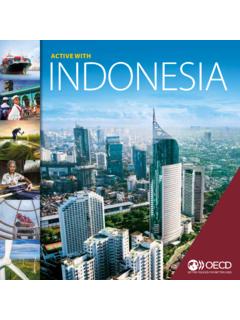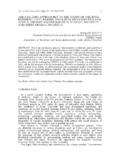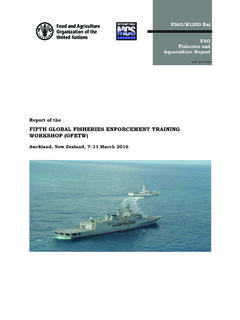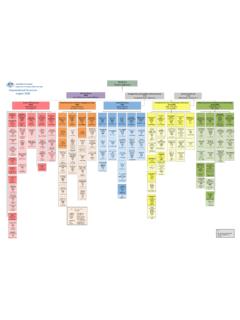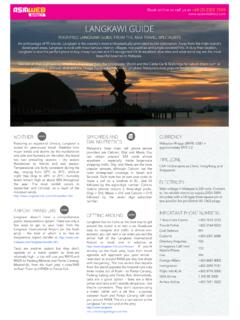Transcription of POLICY CHALLENGES IN IMPLEMENTING …
1 POLICY CHALLENGES . IN IMPLEMENTING . national . development PLANS. myanmar This Note is an extract from the Economic Outlook for southeast asia , China and India 2015: Strengthening Institutional Capacity, POLICY CHALLENGES in IMPLEMENTING national development plans: myanmar myanmar GDP growth rates (percentage change). A. Medium-term economic outlook 2003-07 (average) 2011-13 (average) 2015-19 (average). (forecast, 2015-19 average) 10. GDP growth (percentage change): Current account balance (% of GDP): 8. 6. B. Medium-term plan 4. Period: 2012-15. 2. Theme: development of industry, balanced development , improvements in education, health, living 0. standards and statistical capacities myanmar ASEAN-10 Emerging asia average average Source: OECD development Centre, MPF-2015. C. Basic data (in 2013). Total population: 65 million*. GDP per capita, 2013 (PPP, current USD). Population of Nay Pyi Taw: 1 million (in 2009)**. GDP per capita at PPP: 1 740 (current USD)** myanmar ASEAN-10 average Note: * Total population data for 2013 are estimates.
2 **Provisional results of Census 2014: million. Emerging asia ** IMF estimate. average Sources: OECD development Centre, MPF-2015, national sources and IMF. OECD average 0 10 000 20 000 30 000 40 000. Source: IMF. Composition of exports, 2013 Composition of imports, 2013. (percentage of total exports) (percentage of total imports). Others Mineral 9% Machinery/. products Others electrical Vegetable products 42% 35% 22%. 11%. Textiles 11% Transportation Pearls, 14%. precious stones, Textiles metals, coins 9% Mineral products 12% Wood Metals 11%. 15% 9%. Source: Trademap. Source: Trademap. Summary of the medium-term development plan : Balanced economic growth, social development and better statistics Although myanmar has a history of national and sector development plans, it has introduced new medium- and long-term planning tools with its liberalising reforms. The Framework for Economic and Social Reforms (FESR)1 identifies POLICY priorities for the period 2012 to 2015.
3 It acts as a bridge between the Fifth Five-Year plan (2011-12 to 2015-16). on one hand and, on the other, the reform-oriented national Comprehensive development plan (2011-31) and the future five-year plans that will support it. The Ministry of national Planning and Economic development co-ordinates and drafts the FESR after consulting with other ministries and departments. The FESR reflects the progress that the new government has made since it was elected in March 2011 and its continuing commitment to the socio-economic reform 2 ECONOMIC OUTLOOK FOR southeast asia , CHINA AND INDIA 2015: STRENGTHENING INSTITUTIONAL CAPACITY OECD 2015. POLICY CHALLENGES in IMPLEMENTING national development plans: myanmar goals in the near future in: tax and public finance, monetary POLICY and finance, trade and investment, private sector development , health and education, food security and agriculture, governance and transparency, mobile phones and the Internet, infrastructure, and government effectiveness and efficiency.
4 The proposed sequencing of reform gives priority to macroeconomic measures, followed by various quick wins in areas that do not need further analysis or consensus- building before they take action. Other high priorities are sectoral and institutional reform to improve competition and productivity, and long-term structural and governance reforms (Table ). Table myanmar 's key medium-term development targets 2011-12 to 2015-16. Initial status Current status Target (2015-16). Economic performance Annual GDP growth (%) * ** (2012-13) (2014-18, estimate). Industry share of GDP 26% (2010) 32% (2012) Increase GDP per capita USD 880 (2010) n/a 30%-40% increase (USD 1 144 to USD 1 232). Poverty n/a n/a Reduce rate by half Inflation n/a Recent increases Maintain low inflationary pressures Regulatory and governance reforms Data collection for GDP, revenue and other n/a Started Revise and improve collection and make data statistical purposes publicly available Public financial management n/a Little progress Reform management and improve budget transparency Tax system n/a Started Simplification of tax system Public-private partnerships n/a Started Establish PPP legal framework State-owned economic enterprises n/a Some privatisation Privatise some SEE activities Banking regulation n/a Some reform Allow banks to lend for longer than one year and use moveable assets as collateral Mobile phones of population Some reform, recent Liberalise market and achieve 80% penetration subscribed (2012) phone use by 50% of urban residents Extractive Industries Transparency Initiative (EITI)
5 N/a Likely delayed Adopt the EITI and establish supporting administration in the next two years Yangon transportation n/a n/a Allow Yangon bus fares to increase or reduce bus import duties Public services Healthcare financing n/a n/a Introduce innovative methods of health financing and improve resource allocation Education financing n/a Started Expand the scale and scope of school grants Conditional cash transfers n/a Started Consider introducing CCTs ICT education n/a n/a Support ICT training in schools and through worker training Agriculture extension services n/a n/a Increase services provided Government loans to farmers n/a Large increase in Increase loans seasonal loans, less in development loans Infrastructure development Employment guarantee scheme n/a n/a Consider establishing an employment guarantee scheme for public works Electricity generation Zero combine cycle Multiple projects started Replace all 14 gas turbine plants with plants combined-cycle plants Transportation infrastructure n/a Started Upgrade airports and transportation links to promote tourism Notes: * IMF estimate for real GDP growth in 2012-13 (IMF, 2013b); **Taken from the OECD Economic Outlook for southeast asia , China and India 2014: Beyond the Middle-Income Trap.
6 Source: OECD development Centre's compilation based on national sources. ECONOMIC OUTLOOK FOR southeast asia , CHINA AND INDIA 2015: STRENGTHENING INSTITUTIONAL CAPACITY OECD 2015 3. POLICY CHALLENGES in IMPLEMENTING national development plans: myanmar myanmar 's development plan and implementation POLICY CHALLENGES of IMPLEMENTING the national plan in myanmar Introduce reliable indicators, measurable goals and measurements of government performance to make planning and monitoring effective, particularly in regulatory reform and public finance. Develop POLICY planning and budgeting, which includes appropriate financial supports in agriculture and education. Ensure co-operation with the private sector through PPPs, enable business start ups and foster civil society, because all are important to myanmar 's on going transition. The Framework for Economic and Social Reforms retains the optimistic macroeconomic outlook of past plans The goal for average annual GDP growth remains the originally set out in the Fifth Five-Year plan higher than the for 2014-18 forecast by the OECD (2013a).
7 As even acknowledged in the FESR itself, the government's estimations of myanmar 's growth have been considerably higher than those produced by other organisations in the recent past. Although myanmar has recently been through a bout of high inflation after a period of moderation, the statutory independence of the Central Bank of myanmar . enshrined in the Central Bank Law of 2013 should enable it to better manage monetary POLICY and future inflationary pressure. Better quality of data is needed for effective planning While the FESR restates the government's commitment to the Millennium development Goal (MDG) of cutting poverty to half of 2000 levels by 2015, no reliable information on the incidence of extreme poverty the percentage of the population living on less than USD per day is available to determine what has been achieved. The government is, however, now seeking to improve estimates of GDP and other economic indicators by working with the UNDP to survey private-sector businesses as a first step in developing a System of national Accounts.
8 Financial regulation and public finances are still in need of much reform Reform in financial sector regulation has been gradual. Loan terms are still limited to one year, for example, although some additional forms of collateral (such as machinery, gold and jewellery, deposits, and exportable crops) have been approved. As for public finances, they are still opaque in myanmar . Budgets have been criticised for the lack of accessibility and transparency shrouding allocations and sources of revenue, and for the insignificant reforms in the 2013 Budget. However, with the tax reform law coming into force in March 2014, the government is now working to make potentially significant changes to its tax system. Support for agriculture is increasing, but not necessarily where it is needed Agricultural lending has increased dramatically most noticeably between 2011 12. and 2012-13, when seasonal loans from the myanmar Agriculture development Bank (MADB) rose from MMK 312 billion to over MMK 1 trillion (Figure ).
9 The value of longer-term development loans for the major purchases, like machinery, has also risen 4 ECONOMIC OUTLOOK FOR southeast asia , CHINA AND INDIA 2015: STRENGTHENING INSTITUTIONAL CAPACITY OECD 2015. POLICY CHALLENGES in IMPLEMENTING national development plans: myanmar since 2011-12, although they are available only for restricted sets of investments and far less total funding is in fact available. Government support for development loans is inconsistent from one year to the next, however, and the MADB has occasionally used its own funds to make loans in years when the government has contributed only to seasonal lending. Progress in infrastructure development is in its early stages Work to meet the FESR infrastructure targets is still in its early stages and there is still a long way to go. While the public works employment guarantee scheme is still only a proposal, financing agreements are being developed to replace myanmar 's 14 gas turbine power plants with more efficient combined-cycle plants.
10 As part of efforts to improve international transportation infrastructure, construction contracts have been awarded for expanding Yangon International Airport, building a new airport in nearby Pegu and refurbishing the airport that serves myanmar 's second-largest city, Mandalay. While funding for education is increasing, it is not transforming schools as planned The Ministry of Education is gradually rolling out schemes that offer grants to primary schools and stipends to primary pupils. Between 2012-13 and 2013-14, average grants increased from USD 50 to USD 250 for small schools, from USD 80 to USD 300 for medium-sized schools and from USD 100 to USD 400 for large schools. That trend will have to continue over the next three years to USD 900, USD 1 200 and USD 1 800 if the government's School Grants Programme is to meet its targets (Figure ). The government also plans to expand the Student Stipends Programme, which currently grants monthly stipends to about 11 000 students in 33 of myanmar 's 330 townships.










